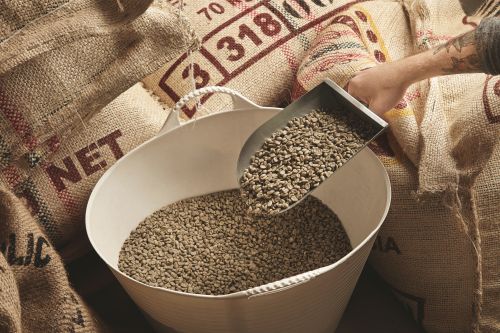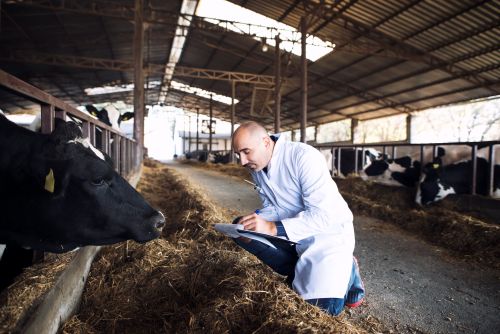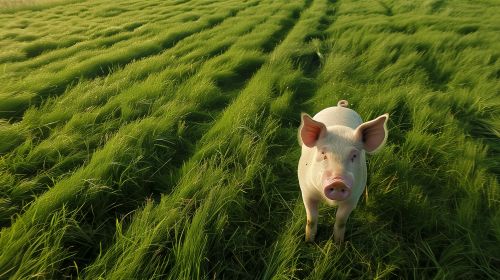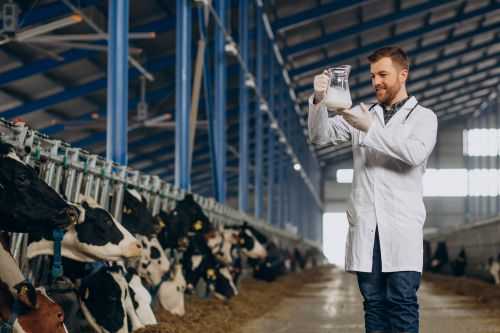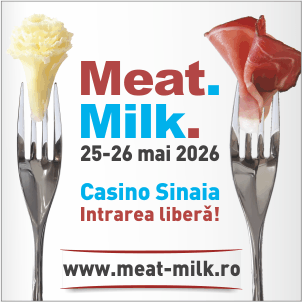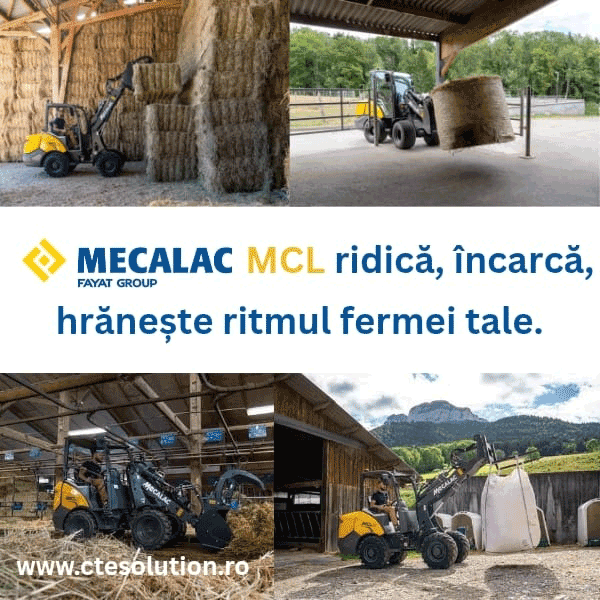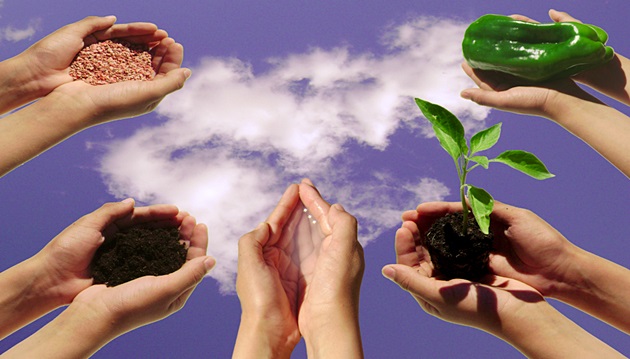
The development of input markets has always been an important issue for agriculture and its stakeholders. Price and quality developments in input markets affect the comparative advantage of agricultural production between regions and types of production.
These developments also impact the incomes of agricultural households and can have implications beyond the farm level. To better understand the situation of the specific market, the European Commission has compiled a report titled "Overview of the agricultural inputs sector in the EU."
Concerns regarding concentration in input markets have been expressed by various stakeholder groups, including farmers' unions, advocacy groups, and policymakers.
A preliminary impression reveals that concerns arise especially regarding the market power of input suppliers, as this can result in higher product costs and a different distribution than what a competitive market would produce.
Five Aspects
European Commission specialists analyzed the market for seeds, animal feed, energy, fertilizers, and plant protection agents entering the farm from two perspectives: demand side and supply side. The study focused on the following five main aspects of each input sector:
- Demand and use at the farm level in EU member states;
- The cost structure of European farmers;
- Market structure;
- Market concentration;
- Major mergers and acquisitions.
For the demand side, country-level and NUTS2 data from the Farm Accountancy Data Network (FADN) were used. Due to a change in data collection methodology, FADN contains two overlapping periods. During the period 2004-2012, average data for representative farms were calculated using a farm typology based on standard gross margins (SGM).
The period 2012-2023 contains average data for representative farms, calculated using a farm typology based on standard output (SO). The time series for member states begin in the year a member state joined the EU.
Regarding supply, initial information on whether market power has increased over time can be obtained by investigating the development of market concentration. If the largest companies operating in an industry can be identified, concentration ratios (CR) can be obtained and defined.
Main Market Coordinates
The share of seeds in the total farm cost varies between 2% and 15% in EU member states and shows a downward trend over time. The commercial seed market in the EU is less concentrated than the global seed market.
The Herfindahl-Hirschman Index (HHI) level of 673 for the EU seed market is low. Substantial differences in concentration can be observed in the seed markets. For example, the sugar beet seed market has the highest concentration, with an HHI of 2444.
In terms of mergers and acquisitions globally, the EU seed market, as of 2020, is characterized more by investments in technology rather than the acquisition of seed companies. Seed company acquisitions by the global top 10 in the past five years have focused on Latin America.
The EU-28 produces about 16% of global compound feed production. Compound feed is produced and consumed mainly within the same country. The largest eight regions for animal feed in the EU are Germany, France, Spain, the United Kingdom, Italy, the Netherlands, Poland, and Belgium. The turnover of feed companies in the EU has increased by 50%, but in the past eight years, the number of companies has decreased in most countries by over 15%.
The five largest feed producers in Europe have an average market share of 53%. Some market concentration can be found at the country level. For example, the share of the five largest producers in the countries are: 38% in Germany, 44% in the UK, 53% in Poland, 63% in Belgium, and 69% in the Netherlands.
None of the European Commission's merger decisions have raised concerns about competition in the feed sector, due to the large number of significant companies, with international competitors actively present in the market under competitive conditions.
Inputs and energy
The agricultural sector of the EU-28 has become a major consumer of energy. Farmers in 23 out of 28 member states spent more than 50% of their energy costs on fuel and lubricants. Energy companies in the EU market are often vertically integrated and operate across multiple energy markets (e.g., natural gas and electricity; crude oil and natural gas).
Concentration in the energy sector is gradually increasing. The crude oil sector is the most concentrated, followed by the natural gas and electricity sectors. Low crude oil prices may lead to more frequent mergers and acquisitions in the energy sector in the future.
The consumption of inorganic fertilizers is declining in the EU-28. The decline in the consumption of N-based products is less pronounced than for K and P. Differences in the relative use of the three types of fertilizers (N, K, and P) can be found in geographic areas, with Mediterranean areas showing lower consumption of N-based products and higher consumption of P-based products compared to other countries.
The share of fertilizer costs relative to total specific costs has followed a positive trend but has been declining over time. In the EU-15, the share of soil improvers increased in previous decades, only to decline in recent years. Among member states, an increase in the share of fertilizer costs can be observed.
The total value of sales of fertilizer companies operating in EU member states increased from 2012 to 2023, recovering after the sharp decline that marked the years of economic recession. The number of fertilizer and soil improver manufacturing enterprises also increased from 2013 to 2023.
Germany, France, Poland, the United Kingdom, and the Netherlands are the countries with the highest values of fertilizers sold, representing over 50% of the total turnover of fertilizers in the EU-28.
The European fertilizer industry appears only moderately concentrated, with an estimated CR5 range stretching from 22.23% to 29.48%, and simulated HHI values ranging between 205 and 302.
Consumption of Protection Substances
The consumption of plant protection agents in Europe increased in value until 2018, followed by a decline in subsequent years. The quantity consumed has generally decreased, suggesting an increase in the unit value of these products. Herbicides are the plant protection agents consumed in large quantities, especially in northern member states.
Fungicides are the second most consumed substances. Mediterranean countries have the highest share of insecticide consumption and the lowest share of herbicides in the total consumption of plant protection agents. The incidence of plant protection agents' costs on the total cost of agriculture in the EU-15 has decreased over the last two decades, while there is an upward trend for PEMS (possibly "Post-Enlargement Member States").
The total value of sales of plant protection agents operating in EU member states saw a slight decrease between 2003 and 2009, followed by a significant increase in the following years. The number of companies producing plant protection agents has remained relatively constant, ranging between 630 and 655 during the period 2013–2023.
Germany, France, the United Kingdom, Italy, and Spain are the countries with the highest turnover values for plant protection agents, accounting for over 80% of total sales. The European plant protection agents industry appears concentrated, with an estimated CR5 range between 79% and 83%, and calculated HHI values ranging from 1556 to 1717. The number of patents in the plant protection industry in Europe has decreased significantly in recent decades.
Investment in Research
The cost of investment for research and development and product development for companies operating in the EU plant protection industry is high and can play a role in unrecoverable costs, acting as barriers to entry and promoting further consolidation.
A positive coefficient of investments implies a percentage increase in cost share, and a negative level implies a percentage decrease in cost share.
The share of energy costs is rising more rapidly for farmers in the EU-15 (0.346 percentage points per year) than for their PEMS counterparts (0.197 percentage points per year). On average, for the EU-28, the share of costs decreased the most during the period 2004–2012 by 0.08 percentage points per year.
The Netherlands shows the highest average share of seed costs in total cost in both periods, 2004-2012 and 2013-2023, with costs increasing by 12% in the latter period. On the other hand, Ireland presents the lowest share of seed costs.
For the rest of the member states, the share of seed costs has been fairly uniform over time, averaging about 8% in both periods. However, countries like Romania, the United Kingdom, and Estonia show a decrease of about 18% (15% for Lithuania), while Belgium, Italy, and the Netherlands record an increase from 12% to 16%.
Seed Market
The commercial seed market was valued at approximately $45 billion in 2023 by the International Seed Federation. The regional distribution is as follows: Asia and Oceania at about 33%, North America at about 32%, Europe at about 24% (including the European Union at about 20%), Latin America at about 9%, and Africa at about 3%.
The European seed market is very diverse. For 2020, 6,974 seed companies were reported. The largest number of companies were reported for Poland and Romania, with approximately 2,000 each, Hungary around 800, the United Kingdom around 800, between 120 and 350 companies for France, Italy, Germany, the Netherlands, and Slovakia, and fewer than 60 in other member states.
The sector is projected to employ around 50,000 people in the future, but detailed data on the number of companies and jobs are hard to obtain and are not provided for the sector by Eurostat. European seed associations and national seed associations report figures, but not annually.
The size of the European seed market has grown by approximately 3.79% in terms of value. The most important commercial seed markets in value terms are: cereals and legumes (39%), corn (26%), seed potatoes (14%), vegetables (11%), oil and fiber crops (4%), sugar beet (3%), and grasses (3%) (EP 2013).
Market Concentration
Market concentration in the seed market is a global concern. The Mammana report indicates that this market concentration is increasing. As highlighted, the main players in some agricultural input markets have a presence in multiple industries.
Some of the most important seed companies are also present in the plant protection agents market (e.g., Bayer, DOW, Dupont, Monsanto).
According to a report published by the European Parliament (EP 2023), the "Top 10 seed" companies had a share of approximately 62% of the global market. Calculations show a slightly higher market share of around 68% for 2023. Among these companies, most are global players also active in Europe. Their market share has substantially increased from about 51% to 68%.
Feed Market
Animal feed plays a leading role in the global food industry. Feed is the largest and most important component to ensure safe, abundant, and affordable animal protein. According to the European Commission's definition, feeds are divided into purchased feeds and feeds produced and used on the farm.
For this study, only purchased feeds were considered. Purchased feeds include minerals, dairy products (bought or returned to the farm), products for the conservation and storage of feed, as well as expenses for maintaining common pastures and grazing lands or their rental. Purchased straw is also included.
Purchased feed for grazing is divided into concentrated feed and roughage. The concentrated feed category includes oil cakes, compound feed, grains, dried grass, dried sugar beet pulp, fishmeal, milk and dairy products, minerals, and products for the conservation and storage of such feed.
The following breakdown of animal feed was considered in this study:
- Concentrated feed for grazing animals (equines, cattle, sheep, goats);
- Roughage for grazing;
- Feed for pigs, poultry, and other small animals.
For the period 2013-2023, concentrated feed represents 40–50% of costs for most EU member states, with farms in Ireland, Luxembourg, Slovenia, and Sweden spending more or close to 70% of the total feed cost on concentrates.
On the other hand, farms in Belgium, Denmark, and the Netherlands spend less than 30% on them (Latvia, Hungary, and Poland less than 20%). The last three countries show considerable spending on poultry feed compared to other countries.
Only farmers in Greece and Romania spend a significant portion of the feed cost on roughage, while farmers in other countries do not seem to require this category of feed.
Feed Costs
The composition of feed costs is generally similar in the two analyzed periods. Farmers in Ireland, in particular, have increased the demand for concentrated feed at the expense of other categories of feed. Hungary shows an increased consumption of poultry feed (more than 50% of the animal feed cost, which is the highest share among all member states).
Farmers in Malta seem to spend the most on feed, while their Lithuanian counterparts spend the least. For several countries, especially in Eastern Europe (e.g., Bulgaria, Greece, the Czech Republic, Estonia, and Romania), the share of feed costs appears to increase over time.
Romania shows an increase of 4 percentage points, Greece 3 percentage points, and Bulgaria 2 percentage points. Among the EU-15 member states, Luxembourg and France show similar increases, with 2 and 1 percentage points, respectively. On the other hand, the share of feed costs has decreased in Poland, Sweden, Ireland, and Italy.
Models indicate a decline in the annual share of feed costs from the early 1990s to the present. The coefficient associated with the indicator for the years following the enlargement is not significant.
This analysis suggests that while some countries have seen an increase in feed costs, overall, there is a trend toward decreasing feed cost shares over time. However, regional variations and specific agricultural practices continue to influence these costs significantly. (Photo Dreamstime)
